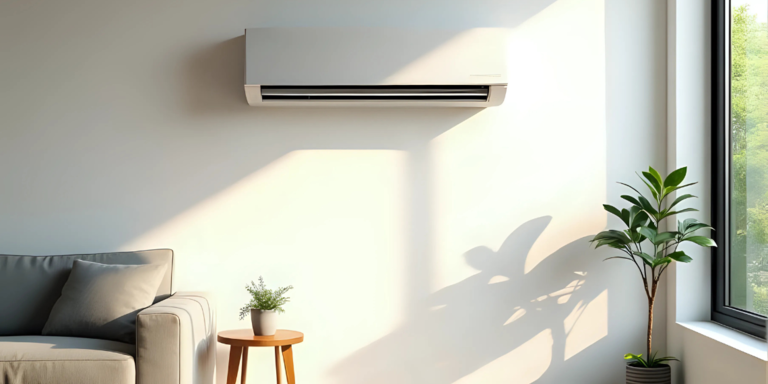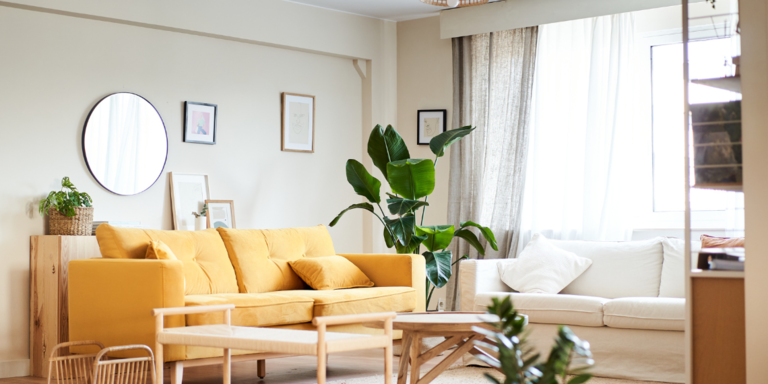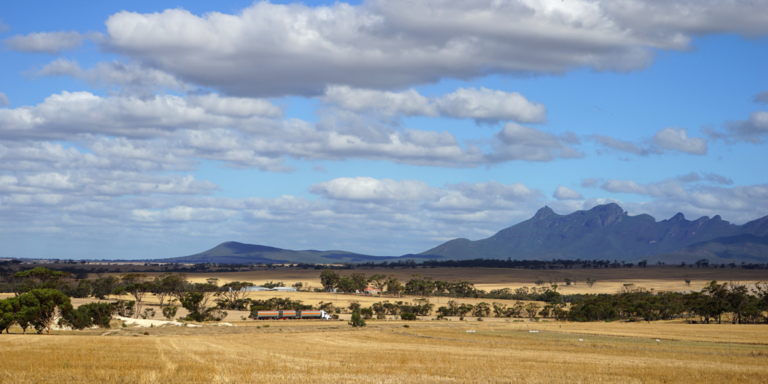- Buy
- Rent
- Sell
- About Us
- Contact Us
Tenants
Expert support when you’re renting
Renting your next home should be a smooth and streamlined process.
At Raine & Horne we support you at every stage to find the rental property that suits your needs and your budget – no time wasting, no hassle, just all the help you need to settle into your rental home sooner.
As a fourth-generation 100% Australian-owned family business, Raine & Horne has a reputation for expertise and a commitment to excellence. With over 300 offices around the globe and over 72,000 properties under management, we take the time to understand your rental property needs and aspirations. No matter whether you’re renting for the first time, you’re new to an area, or you’re looking for a professional property manager with local knowledge, Raine & Horne’s rental service can help you enjoy a better rental experience.
Raine & Horne experts understand the real estate market, and we can answer all your questions about the rental process, market rents in your area, and what you can expect as a tenant.
Our professional rental service
Raine & Horne helps you find the perfect rental property solution for your needs backed by:
- An outstanding selection of available rental properties
- Our up-to-date online database that helps you narrow down the choice of properties you’d like to inspect
- A national network of offices – so we've got you covered for a rental property across the country
- The full support of our rental team to inspect properties available for rent
- A streamlined rental application process
- Support negotiating and completing your lease agreement and lodgement of bond
- A prompt and reliable source of assistance to help you settle into and make the most of your rental property.
To enjoy a bigger choice of rental properties, and a better tenant experience, talk to Raine & Horne today – we can help you into your rental home sooner.
Property Management News

A: With summer around the corner, renters across Australia are prioritising air conditioning.
Domain reports that air conditioning is now one of the five most searched rental features in almost every major city. For example, it’s number one in Sydney and Adelaide with renters, number two in Brisbane and Perth, and remains in the top five in Melbourne[i].
Demand in Adelaide has been especially marked, with searches for air-conditioning soaring by 751% in the past year.
Yet, despite this surge in interest, only 35% of rental listings include air conditioning, highlighting a gap between what tenants want and what landlords are providing. Yet this disconnect presents an opportunity for investors willing to act.
Air-conditioning isn't the only smart investment for landlords to consider. As costs rise with energy-guzzling appliances such as air conditioners working overtime, landlords can ease the financial pressure on tenants and add long-term value by embracing sustainable upgrades.
According to research from Cotality (formerly CoreLogic), properties with solar panels, for example, are valued at around 2.7% more than those without — an uplift of roughly $23,100 nationally. Regionally, the impact varies significantly, with the highest percentage uplift seen in Regional Northern Territory at 6.9%, or about $31,350. In dollar terms, the uplift for a capital city property with solar ranged from $14,093 in Adelaide to $30,459 in Hobart, reflecting buyer demand for energy-saving features.
Moreover, each additional NatHERS (Nationwide House Energy Rating Scheme) star rating[ii] can increase a property's value by 1.3%, or about $10,560[iii]. A NatHERS rating indicates the amount of energy required to maintain a comfortable environment. The rating ranges from 0 to 10, with a higher star rating indicating that the home requires less energy for heating and cooling, resulting in lower running costs.
Yet solar is no longer a niche addition to properties, either. About 29% of homes now have rooftop systems, with uptake topping 40% in Perth, Adelaide, and Brisbane. Bungarribee in Sydney's west even leads the nation, with 96% of homes sporting solar panels.
Beyond solar, minor updates can also boost tenant appeal. Energy-efficient light bulbs shouldn’t be underrated, while higher-rated hot water systems, quality window furnishings to keep out heat, and well-sealed doors to stop drafts are simple, cost-effective ways to improve comfort and liveability for your tenants.
These improvements can increase tenant attraction and retention and may expand the possible buyer pool when selling an investment property, potentially resulting in a faster sale. Some landlords question whether such upgrades add value, but research from Cotality indicates they do.
For advice on improving the appeal of your investment property with energy-efficient features and hacks, speak with your local Raine & Horne Property Manager for expert guidance.
[i] https://www.domain.com.au/news/renters-needs-are-basic-just-give-them-a-home-with-air-conditioning-1430585/
[ii] https://www.nathers.gov.au/
[iii] https://www.cotality.com/au/insights/articles/solar-panels-add-thousands-to-home-values#:~:text=Overview,benefits%20of%20energy%2Defficient%20homes.

Furnished rentals usually work best in locations with strong demand for short- to medium-term stays. This includes properties near hospitals, universities, major infrastructure projects, mining hubs, or inner-city areas where hotels are expensive.
Regional and coastal hubs with fly-in, fly-out workers and tourist areas can also present good opportunities to maximise returns by offering a property fully furnished to the local rental market.
Professionals on short contracts, medical staff, FIFO workers, students, and people relocating or renovating are common tenants. Although many start on short leases, they often extend and stay longer than expected.
Furnished properties can be a smart way to generate additional income from your investment. Units, in particular, often appeal to short-term renters. On the flipside, furnished rentals can narrow your tenant pool, as not everyone wants or needs furniture.
If an apartment building offers added amenities such as a gym, pool, or communal workspaces, a fully furnished setup can make your investment property even more attractive to renters.
Additionally, the quality of furniture does play a role in attracting tenants. While you don’t need to purchase upmarket furniture, mismatched second-hand furnishings won’t impress potential renters. Therefore, aim for a coordinated style with good-quality furnishings that create a welcoming and professional feel. Durable, mid-range furniture is usually the sweet spot.
There aren’t strict rules or timelines on when to replace furniture, but mattresses should possibly be replaced after several years. Using mattress protectors is also essential.
Interestingly, furnished rentals can sometimes keep tenants longer than expected. For example, there are plenty of instances where a tenant plans to rent a fully furnished apartment for only a few months but has ended up living there for many years. Circumstances change, and a furnished property can provide flexibility that appeals to tenants.
An often-overlooked advantage of a fully furnished rental property is the reduced risk of damage from tenants moving in and out. With quality furnishings already provided, there’s less chance of scratches, dents, or accidental wear and tear when moving heavy items such as refrigerators and lounge suites on walls, floors, and doorways, ultimately helping safeguard your investment.
On the issue of wear and tear, landlords may be able to claim depreciation on furniture, whitegoods, and appliances provided with a furnished property. This can offset some of the upfront cost of setting up the property – and it’s a good idea to seek advice from your accountant before deciding whether to furnish a rental property.
It’s also important to check that your landlord insurance includes contents cover for furnished rentals.
For advice on whether to rent your investment property fully furnished, speak with your local Raine & Horne Property Manager for expert guidance.

Great question! Property managers don’t simply pluck a figure out of thin air. When recommending a rent adjustment, they draw on several sources and factors.
The first step is usually to prepare a “comparative market analysis” (CMA). This report looks at similar properties that have recently been leased, both within the managing office’s portfolio and across the broader market. Property managers also rely on data from trusted research providers such as Cotality (formerly CoreLogic), along with insights from major online portals including realestate.com.au and Domain.
A good property manager will present landlords with this evidence — recent lease results, asking rents for comparable properties, and current vacancy rates — to justify their recommendation. They’ll also seek input from the landlord about expectations around a fair rental return.
Beyond market data, property managers and landlords will also consider tenant-related factors such as the length of tenancy, payment reliability, and how well the property is maintained. If these boxes are ticked, many landlords prefer to settle on a fair rental adjustment that supports stability rather than push for every last dollar.
That said, investor circumstances vary. Some long-term investors (such as members of a self-managed super fund) might value tenant security over small rent rises of $10-$20, while “mum and dad” investors balancing investment property loan repayments may prioritise higher yields – and therefore will seek some extra rental dollars.
Seasonal demand can also influence timing. For instance, reviews in January, a peak moving period for many Aussies, may deliver more substantial increases compared to mid-winter, when rental demand is typically softer.
Finally, any adjustment must comply with state or territory legislation where the investment property is located. Most jurisdictions regulate how often rent can be increased (commonly once every 12 months), and property managers are required to provide tenants with the correct notice in writing before an adjustment.
For more insights into how rental adjustments are determined, reach out to your local Raine & Horne Property Manager for expert guidance.

Most landlords in Australia do the right thing—they wouldn’t dream of renting out a property that’s unsafe or clearly substandard. While not every investor would personally live in their investment property, the majority understand that their responsibility is to provide a safe, functional, and compliant home for tenants.
That said, if your property is older (20–30+ years) and hasn’t had recent renovations or safety checks, it may no longer meet today’s minimum standards. In this case, you have several options to ensure an investment property complies with the minimum standards:
- Start with your property manager. While a property manager isn’t qualified to conduct formal compliance checks, they will be able to identify visible issues—such as broken fittings, damp or mould, or inadequate locks—and flag them with a landlord for action.
- Engage a licensed building inspector. Engaging building specialists is recommended for older homes, such as timber cottages or Queenslanders, where structural issues, termite damage, or outdated wiring may not be evident to the naked eye. Better still, a professional inspection is typically tax-deductible for landlords.
- Consider the property type. If your investment is part of a strata complex, many safety responsibilities (such as balcony railings or stairwell lighting) fall under strata management. But if you own a freestanding home, you’re responsible for the entire property, including its condition, safety, and compliance.
Minimum rental standards across Australia
Minimum standards vary slightly between states and territories. However, all jurisdictions have adopted similar baseline standards to ensure rental properties are safe and functional for tenants. Generally, to meet current regulations, regardless of the property’s location, it should:
- Be structurally sound, weatherproof, and safe to live in
- Provide adequate lighting, both natural and artificial, in living areas
- Ensure sufficient ventilation in all rooms, including bathrooms and laundries
- Be supplied with electricity, gas (if applicable), and plumbing in working order
- Offer hot and cold water suitable for drinking, washing, and cleaning
- Have a private bathroom with a working toilet, sink, and shower or bath
- Include a kitchen with a working sink and stovetop (VIC requires 2+ burners)
- Be free from mould, damp, and vermin, unless caused by the tenant
- Have secure locks or latches on external doors and windows
- Provide window coverings (curtains or blinds) for privacy in living/sleeping areas
- Contain adequate safety features, including smoke alarms (all states).
Also, if a laundry is provided it must have adequate plumbing and drainage to allow for the installation and use of a washing machine.
If you’re unsure whether your investment property meets the minimum standards, contact your local Raine & Horne Property Manager for an obligation-free assessment and expert advice.

As governments move to standardise rental application processes across Australia, tenant privacy is rightly in the spotlight—especially amid growing concerns about data protection in an age of rising cybercrime.
The bottom line is that tenants must provide personal information to support a rental application. But increasingly, there are concerns about the volume and type of data and information collected, and who has access to it. There’s also a clear push to ensure property managers shorten the period for holding data after a tenancy ends.
In response, Queensland, South Australia and Northern Territory have rolled out standardised rental application forms to limit the amount of personal information collected. NSW is set to follow suit. The goal in these states is to protect tenants' privacy and reduce the risk of data breaches – and ensuring that property managers only collect the data that is necessary for weighing up whether a tenant is the right fit for a rental property.
While the information collected may vary slightly between states and territories, this information will usually allow property managers to verify your identity (e.g. driver’s licence or passport), confirm you can afford the rent (payslips or bank statement) and review your rental history (references from previous landlords or property managers). They also need to identify any other occupants including co-tenants, and whether you have any pets.
A property manager won’t need to ask personal questions unrelated to your tenancy, such as your relationship status and so on. Although uncommon, such questions from a property manager can raise discrimination concerns, and most real estate professionals recognise the legal risks involved.
That said, if a tenant feels uncomfortable with any questions asked of them, they can lodge a complaint with the relevant state authority. In Queensland, for example, there is the Residential Tenancy Authority (RTA) or Fair Trading in NSW.
At Raine & Horne, we’re actively educating our property managers about their responsibilities around data collection, retention, and deletion. We’re committed to making sure our offices understand what information is appropriate to request—and what crosses the boundary.
The bottom line is that privacy matters, and the industry is evolving to protect tenant data better.
Need more clarity about your rental application or privacy rights?
Reach out to your local Raine & Horne Property Manager. They’re here to help you understand what information is required—and to ensure your privacy is protected every step of the way.

Raine & Horne Rural has wrapped up a breakout 2024–25 financial year, capped by a $13 million farmland sale in Western Australia and the listing of a massive cattle station, spanning 407,000 acres.
These headline-grabbing milestones were part of a broader year of success, with the network listing 425 rural properties and settling 210 transactions nationwide, representing almost $300 million in agricultural sales.
“The results for the 2024/25 financial year reflect continued demand for quality rural holdings and the expanding strength of Raine & Horne’s growing rural network,” said Travis Wentriro, Regional & Rural Network Manager at Raine & Horne Group.
Investor confidence in large-scale agricultural assets remained strong, with five properties selling for more than $10 million. The top sale of the year was a $13 million transaction for a 3,438-acre mixed farming property at 2577 Gnowangerup-Tambellup Road, Dartnall, WA. Sold by John Hetherington and the team at Raine & Horne Rural Great Southern, the property spans seven titles and offers productive cropping and grazing potential just outside Tambellup.
In terms of scale, the largest listing was Dairy Creek Station—a 407,000-acre (1,650 square mile) cattle station in WA’s Upper Gascoyne, marketed by Gerald Wetherall of Raine & Horne Rural WA. Still available, the listing demonstrates the network’s capacity to handle landmark rural assets across Australia’s vast regions.
As the new financial year gets underway, Raine & Horne Rural has over 320 rural properties currently listed for sale nationwide providing further evidence of a market still brimming with opportunity.
If you’re looking to buy, sell, or expand your rural holdings in 2025–26, contact your local Raine & Horne Rural office for expert guidance.


